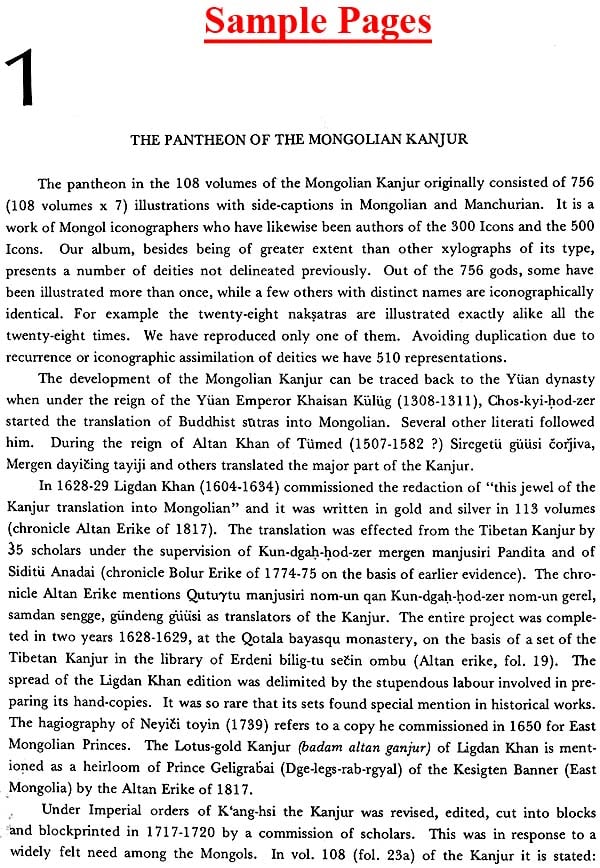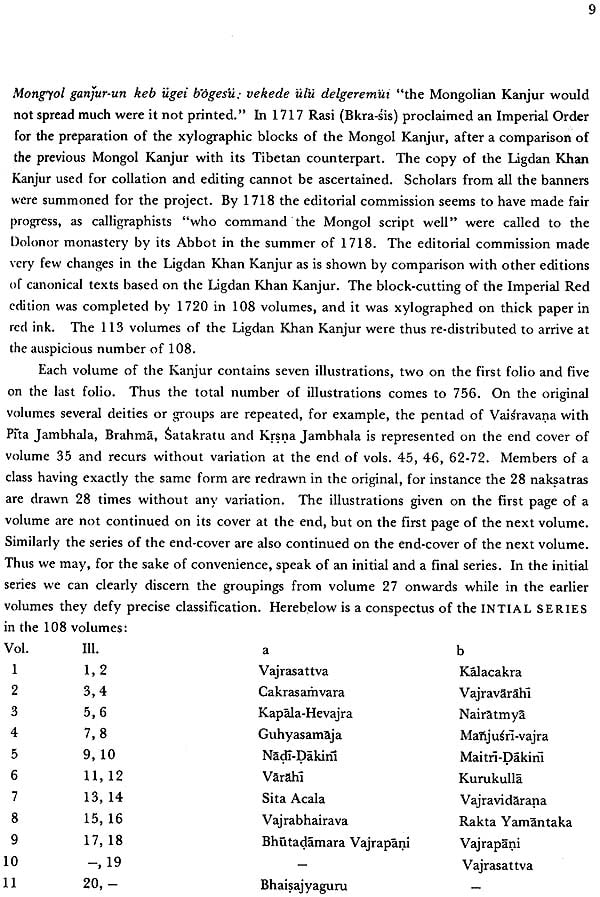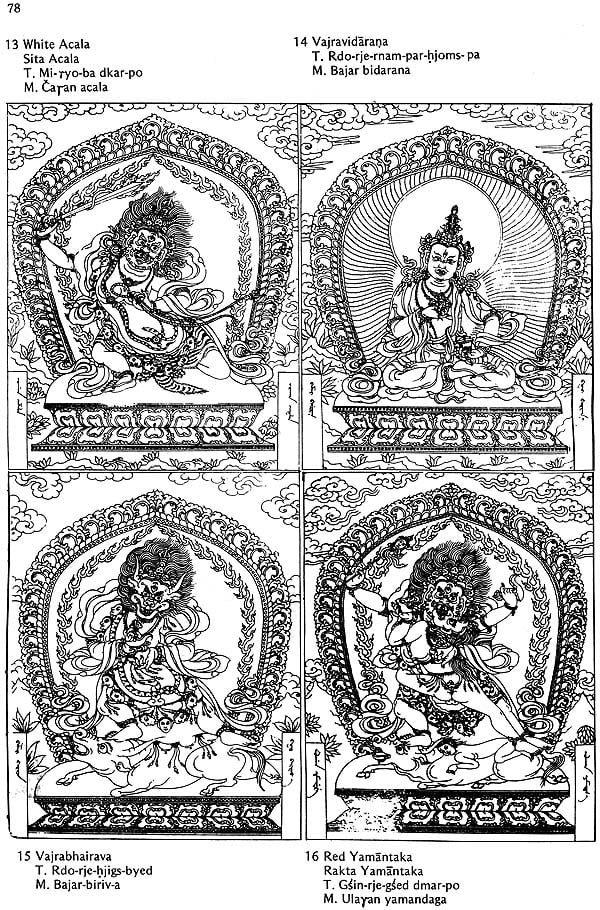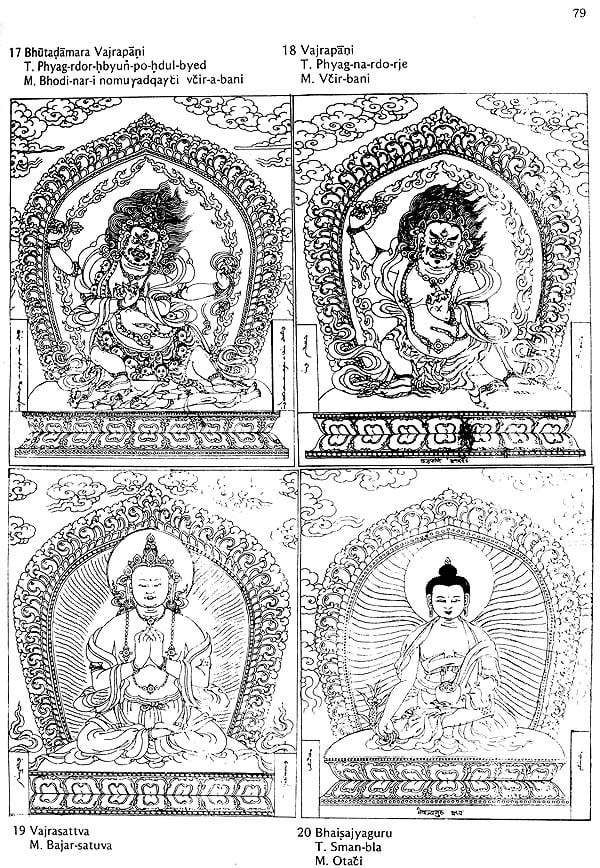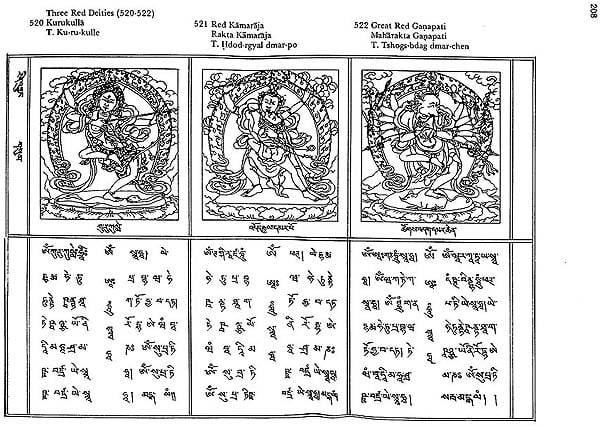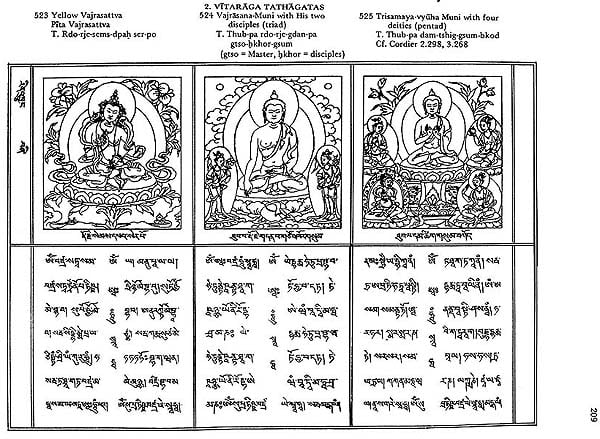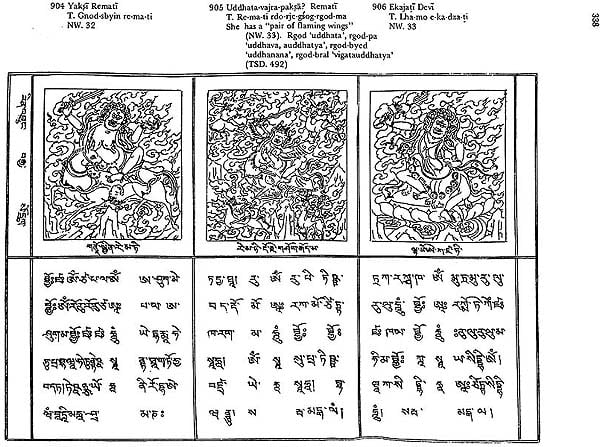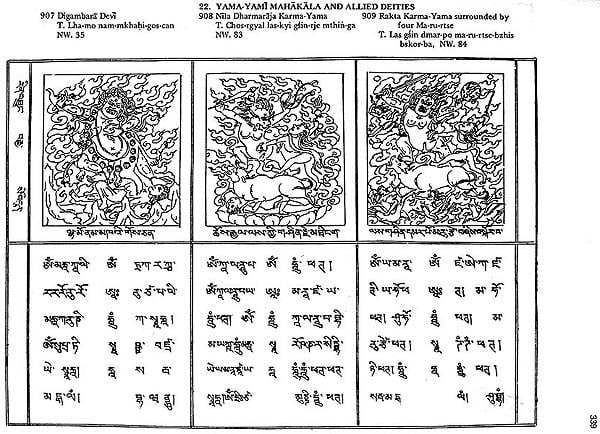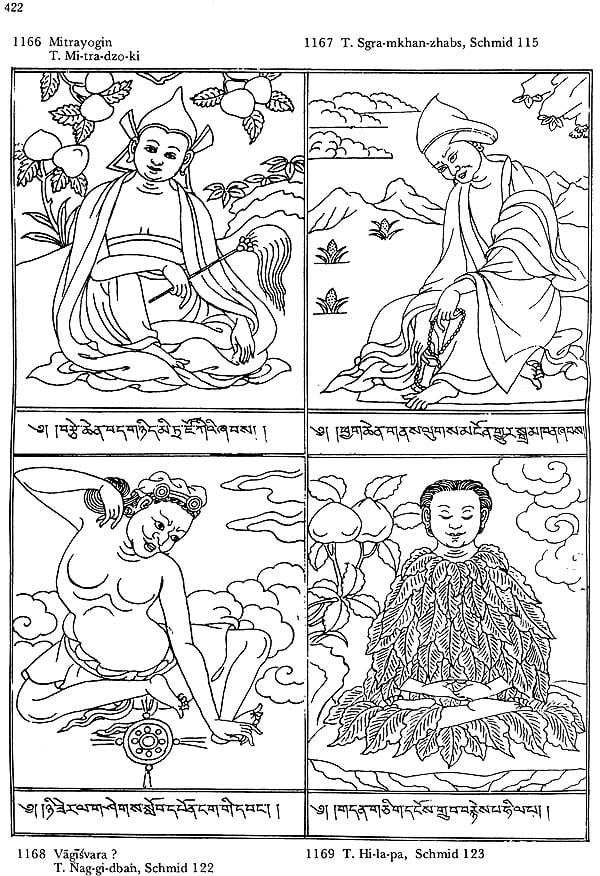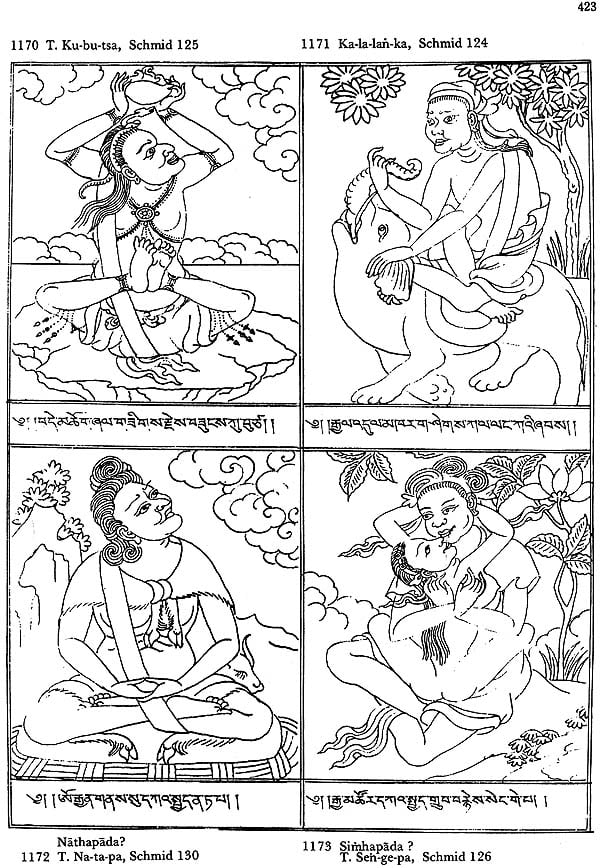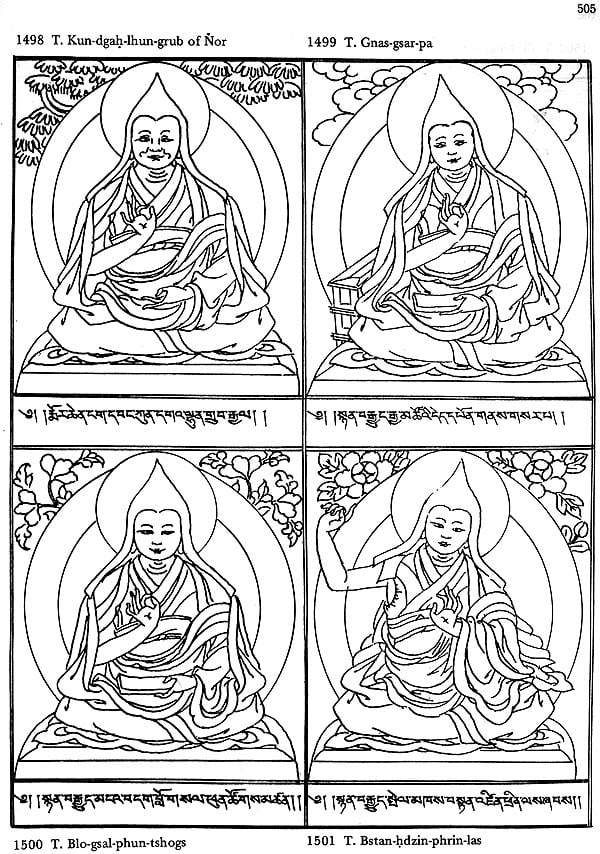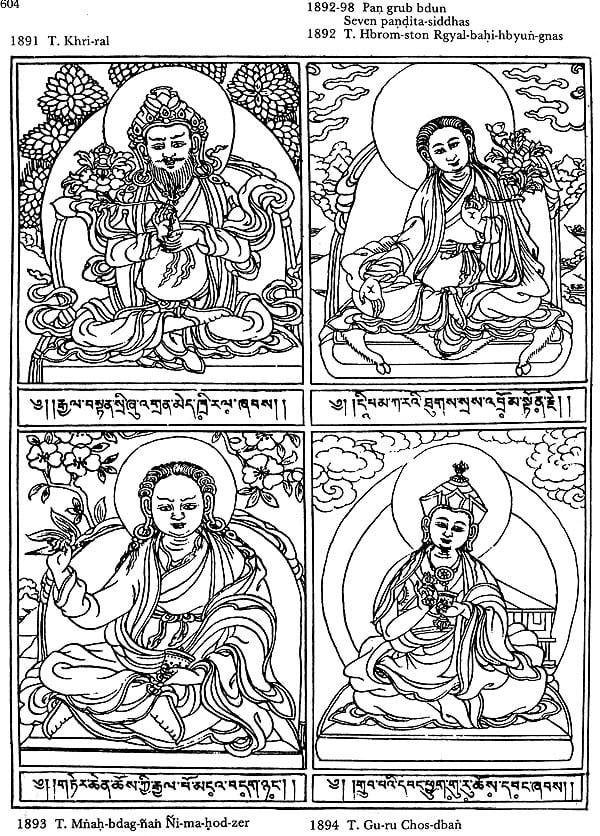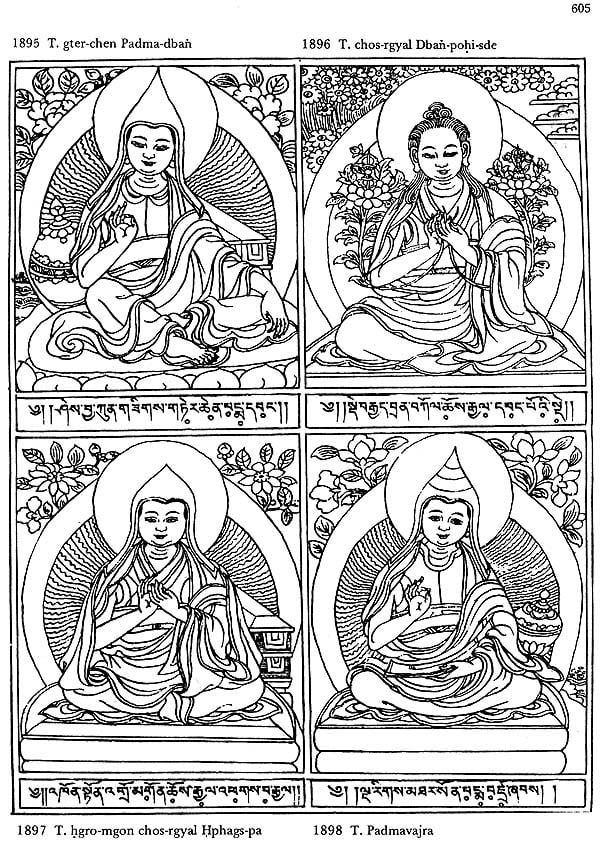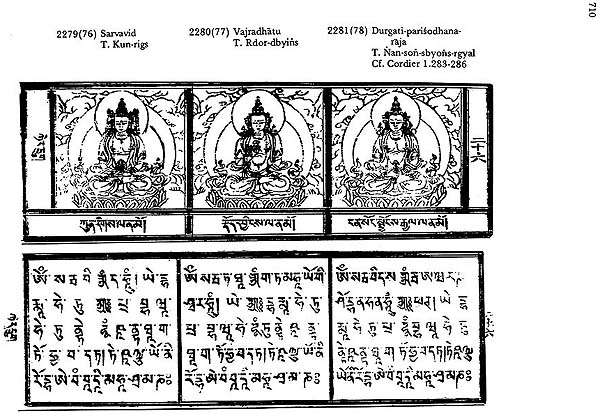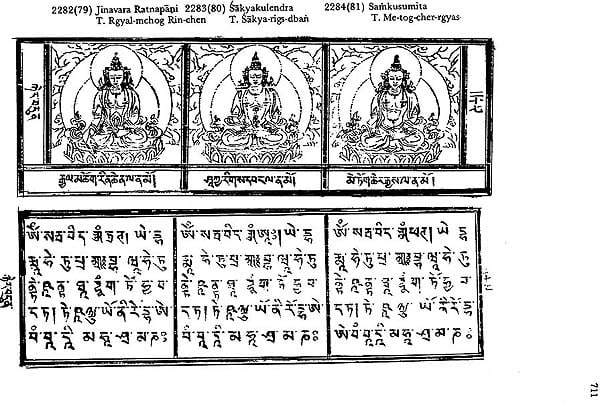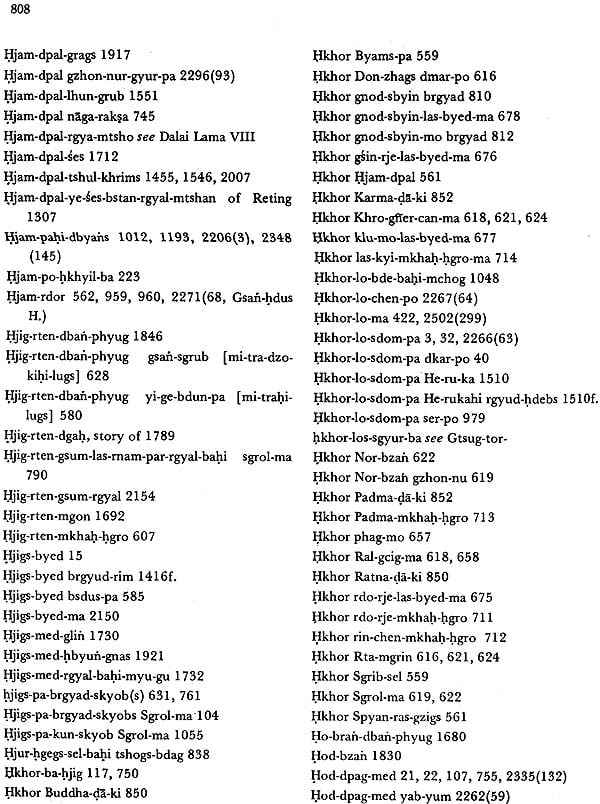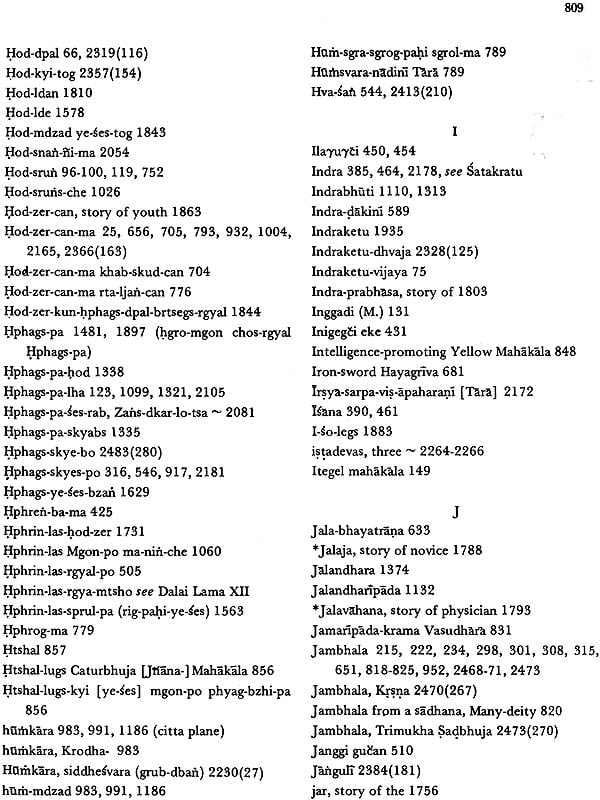
Buddhist Iconography (Compact Edition)
Book Specification
| Item Code: | NAK280 |
| Author: | Lokesh Chandra |
| Publisher: | International Academy of Indian Culture and Aditya Prakashan |
| Language: | English |
| Edition: | 2006 |
| ISBN: | 8177420682 |
| Pages: | 879 (Throughout B/W Illustrations) |
| Cover: | Hardcover |
| Other Details | 11.5 inch X 9.0 inch |
| Weight | 2.20 kg |
Book Description
About the Book
The an that arose from the snowy heights and in the warm plains of India became the frozen music of form in the vast expanses of Asia, from Siberia, Mongolia, Tibet, China, Korea, and Japan to Nepal, Ceylon, Thailand, Cambodia, Indonesia and other countries. Indian art in its Buddhist idiom is a transic response to the immensity of hurnmano-cosmic unity.
The rich Buddhist heritage of Tibet is a revelation of the depths of transic meditations of great Masters which have been translated into the majestic abundance of visive symbols. These symbols take the form either of images or of thanka scrolls painted on linen as well as on silk. Day by day they are attracting ever-increasing attention of young students, art connoisseurs, artists, historians of art, of those interested in the mystique of the Orient, and even of the layman. As more and more thanka scrolls are being painted to adorn homes and inspire the hearts of modem man, it is evident that their subtle milieu is in need of introduction. The plurality of gods, goddesses and godlings painted in brilliant colouring, surrounded by flames, or in moving clouds, provides innumerable visual centres and rhythms. To afford an identity to this astonishing world of beauty, it becomes imperative to bring out a complete pantheon of Tibetan deities, so that they may be properly named, their symbolism understood in all the sublimity of colours of the original so that the frozen music of colour and form verily echoes the poly tonic visions of Cosmic Consciousness.
The outstanding deities of the Lamiast Pantheon have been studied in the learned works of modem scholars. Pander, Oldenburg and Clark have published three autocthon iconographic collections which have proved to be of importance in identifying deities of the enormous pantheon of Tibetan Buddhism. Besides the above three pantheons, we have the Rin-hbyun which has come to be well known in research works as the Five Hundred Gods of Narthang.It has been a major source for the iconographic studies of A. Grunwedel and F.D. Lessing. Isolated pictures have been published by them. In the present work, we have reproduced this pantheon of 500 deities and teachers, besides four others. The vast iconographic material preserved in Tibet is thus made accessible to modem scholarship. The present work is a sine qua non for Buddhist studies Tibetology, Mongolistics, History of Art, Indian Art and so on.
Prof. Lokesh Chandra is a renowned scholar of Tibetan, Mongolian and Sino-Japanese Buddhism. He has to his credit over 360 works and text editions. Among them are classics like his Tibetan-Sanskrit Dictionary, Materials for a History of Tibetan Literature, and his ongoing Dictionary of Buddhist Art in about 20 volumes. Prof. Lokesh Chandra was nominated by the President of the Republic of India to the Parliament in 1974-80 and again in 1980-86. He has been a Vice-President of the Indian Council for Cultural Relations, and Chairman of the Indian Council of Historical Research. Presently he is Director, International Academy .of Indian Culture.
Introduction
People say I play as easily as a bird sings. If they only knew how much effort their bird has to put into his song.
Images are continual metamorphoses that appear and reappear in the flames of a fire, in moving clouds, or in the deeps of transic meditations. A deeply human response that reaches the level whence all vision spring. They re-connect us with the great stream of energy whence all creative acts emanate. This humano-cosmic unity becomes a force of expansion to feel the beat of the universe together with the pulsation of life. The myriad of the universal sursum or upward tendency is translated into an overflowing of visive symbols:
"The ten thousand things have in me their perfection".
The art that arose from the snowy heights and in the warm plains of India became the frozen music of form in the vast expanses of Asia, from Siberia, Mongolia, Tibet, China, Korea, and Japan to Nepal, Ceylon, Thailand, Cambodia, Indonesia, and other countries. Indian art in its Buddhist idiom is a transic response to the immensity of humano-cosmic unity. It is translated into a plurality of visive symbols, the frozen music of forms, the koreru ongaku. Here are the graceful lines and colours of sketches, sculptures and paintings. They range from serene enlightenment to ferocious forms. Calm exterior and intense introspection, Joy and Harmony, springing from the serenity of "water drawn from the depths of mind whose bottom is beyond measure" (poet Hideyoshi). A world that is astonishing in its unity and continuity - spanning fourteen centuries. A beauty coterminous in its scope with the aesthetic limits of man, a power, both sublunary and celestial, human and divine, le ueritable mandala se fait dans le fond du coeur. These flowing lines, immense and elemental, grand and sublime, these unfathomed universes' of thought ever breaking forth into the abstract beauty of sight, pregnant with the possibility of infinite numbers-these shredded fragments of continents in motion.
The rich spiritual heritage of Tibet is a revelation of the depths of transic meditations of great Masters which have been translated into the majestic abundance of visive symbols. These symbols take the form either of images or of thanka scrolls painted on linen as well as on silk. Day by day they are attracting ever-increasing attention of the young students, art connoisseurs, artists, historians of art, of those interested in the mystique of the Orient, and even of the layman. As more and more thanka scrolls are being painted to adorn the homes and inspire the hearts of modern man, it is evident that their subtle milieu is in need of introduction. The plurality of gods, goddesses and godlings painted in brilliant colouring, surrounded by flames, or in moving clouds, provides innumerable visual centres and rhythms. To afford an identity to this astonishing world of beauty, it becomes imperative to bring out a complete pantheon of Tibetan deities, so that they may be properly named, their symbolism understood in all the sublimit of colours of the original so that the frozen music of colour and form verily echoes the poly tonic visions of Cosmic Consciousness.
The outstanding deities of the Lamaist Pantheon have been studied in the learned works of modern scholars", Pander, Oldernburg and Clark have published three autochthon iconographic collections which have proved to be of importance in identifying deities of the enormous pantheon of Tibetan Buddhism. The three pantheons are.
(1) The Bla-ma-yi-dam-mchog-gsum-bkah-sdod-dan-bcas-pahi"-tshogs-zhin-gi-sku-brnan-gsum-brgyahi-grans-tshan-ba, prepared by Lcan-skya Qutuytu Rol-pahi-rdo-rje Lalitavajra =300 Icons.
(2) The Chu Fo P'u-sa Sheng Hsiang Tsan, also ascribed to the Lcan-skya Qutuytu =360 Icons (Clark 1937).
(3) The Phun-sum-tshogs-pahi-gtsug-Iag-khan pantheon, referred to by its Chinese appellation Pao-hsiang Lou Pantheon, consists of 780 images with six presiding deities in tile sidechapels and one life-size central image (Clark 1937).
The first pantheon is accompanied by dharanis and the second by Chinese stotras. The Sanskrit dharanis often refer to the Sanskrit names and are thus of significance. Unfortunately these dharanis have not been reproduced either by Pander or by Oldenburg. So we have reproduced the original xylograph along with the dharanis (ill. 2204-2503). The. 360 Icons are followed by their stotras in Chinese: the stotras have not been included by Clark in his reproduction. The third pantheon is also a creation of Lcan-skya Qutuytu Lalitavajra. This pantheon is most interesting, for herein the images of deities are referred to the canonical texts. From the six quadrilingual inscriptions accompanying the six sidechapels flanking the life-size image of Tson-kha-pa, we know that the first chapel' contains deities of the Sutras and the remaining five chapels are devoted to the Tantras.
| Side Chapel | Text | Presiding deity |
| 1 | Sutras | Sakyamuni |
| 2 | anuttara-tantra, Father2 Tantra (Bla-med pha-rgyud) | Guhya aksobhyavajra |
| 3 | Anuttara-tantra, Mother2 tantra (Bla-med ma-rgyud) | Samvararaja |
| 4 | Yoga Tantra | Sarvavod Vaorpcama |
| 5 | Carya Tantra | Abhisambodhi-Varocana |
| 6 | Kriya tantra | Amitayus |
Each side chapel has its presiding deity at the central alter surrounded by eight images, flanked by two cabinets each containing 61 deities. In each side-chapel we have 130 deities (8+61+61=130) excluding the presiding deity of the central altar, Thus in the six side, chapels there are 780 deities. Including the image of Tson Kha-pa and the six presiding deities of the side-chapels there were originally 787 deities. Out of these only 766 images or inscribed pedestals are preserved.
Besides the above three pantheons, we have the rin-hbyun snar- than brgya-rtsa Rdor-hphren-bcas-gsun-pahi-bris-sku-mthon-ba-don-ldan which has come to be well known in research works as the five Hundred gods of Narthang. It has been a major source for the iconographic studies of A. Grunwedel and F. D. Lessing. Isolated pictures have been published by them. Now, we shall details the pantheons illustrated in the present volume.
Volume 1
| Introduction | 5 |
| 1. The Pantheon of the Mongolian Kanjur | 8 |
| 2. The Narthang Pantheon | 22 |
| 3. The Bhadrakalpika-sutra pantheon | 42 |
| 4. the Astasharika Pantheon | 43 |
| Corrections to the Index | 46 |
| 5. The Three Hundred Icons | 53 |
| significance of Tibetan Pantheons for the history of Buddhist art | 55 |
| Literature Cited | 60 |
| Concordance of the old numbers of the NTMP 1-7 with the new numberss of this book | 65 |
| Concordance of the new numbers of this book with the old numbers of the NTMP 1-7 | 69 |
| Plates | |
| 1. the Pantheon of the Mongolian Kanjur | 73 |
| 2. The Narthang Pantheon | 2 |
Volume 2
| 379 | 3. The Bhadrakalpika-sutra pantheon |
| 399 | 4. The Astasahasrika Pantheon |
| 683 | 5. The three Hundred Icons |
| 785 | Index |
| 849 | Karchag to the editions of Din-ri-ba Chos-kya rgyal-mtshan of La-stod Sel-dkar rdzon |
